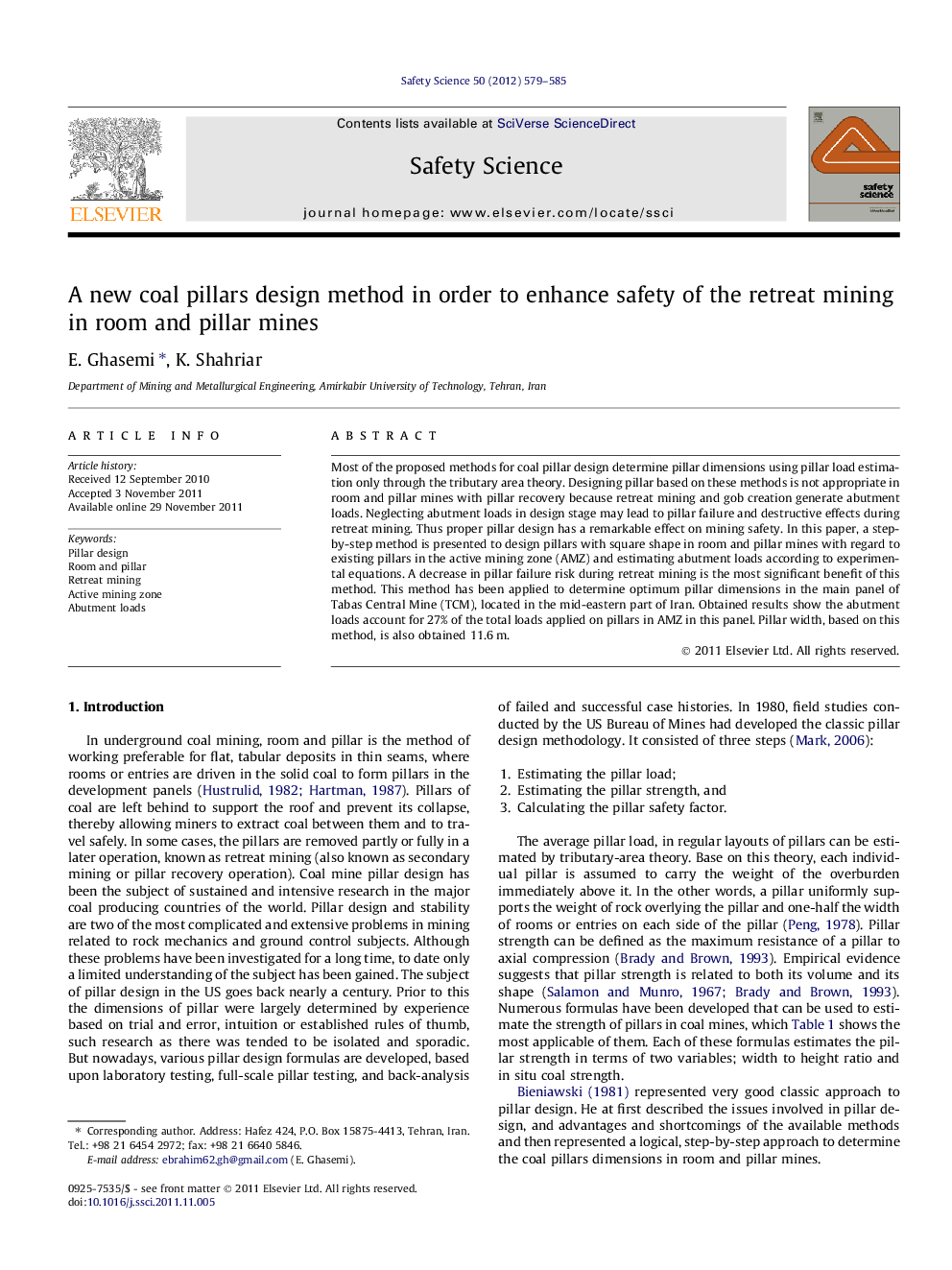| Article ID | Journal | Published Year | Pages | File Type |
|---|---|---|---|---|
| 589334 | Safety Science | 2012 | 7 Pages |
Most of the proposed methods for coal pillar design determine pillar dimensions using pillar load estimation only through the tributary area theory. Designing pillar based on these methods is not appropriate in room and pillar mines with pillar recovery because retreat mining and gob creation generate abutment loads. Neglecting abutment loads in design stage may lead to pillar failure and destructive effects during retreat mining. Thus proper pillar design has a remarkable effect on mining safety. In this paper, a step-by-step method is presented to design pillars with square shape in room and pillar mines with regard to existing pillars in the active mining zone (AMZ) and estimating abutment loads according to experimental equations. A decrease in pillar failure risk during retreat mining is the most significant benefit of this method. This method has been applied to determine optimum pillar dimensions in the main panel of Tabas Central Mine (TCM), located in the mid-eastern part of Iran. Obtained results show the abutment loads account for 27% of the total loads applied on pillars in AMZ in this panel. Pillar width, based on this method, is also obtained 11.6 m.
► The paper presents a new method for pillar design in room and pillar coal mines. ► The method can estimate the magnitudes of various loads on pillars. ► The method uses tributary area theory and abutment angle concept to estimate loads. ► The main advantage of the method is pillar failure risk reduction in retreat mining. ► The outcome of this method is safety for miners and efficiency in coal recovery.
